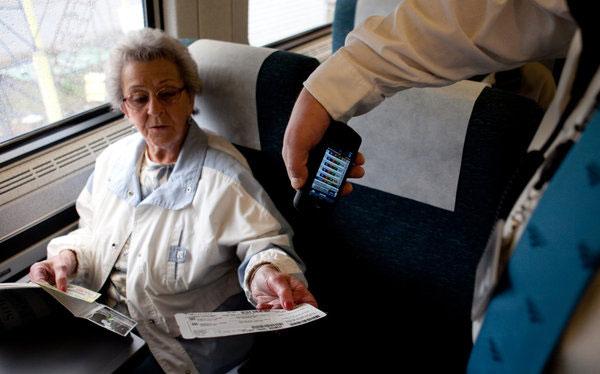The iPhone has found a new use at Amtrak, where train conductors have begun using Apple's smartphone to scan passengers' tickets electronically.
Amtrak, which is owned by the U.S. government and has more than 20,000 employees, began issuing iPhones to train conductors last November, according to The New York Times. By late this summer, the company plans to have a total of 1,700 conductors using iPhones to scan tickets across the country.
The company, which oversees American railroad train services, invested $7.5 million in its new iPhone-based ticketing system. Most of the cost — $5.5 million — came from developing the software, while the remaining $2 million cost is related to hardware.
The new system will allow customers to print their own tickets, or load tickets on their smartphone. The barcode included with a paper or digital ticket can be scanned by a modified iPhone, outfitted with a scanner and a special application.
Each conductor's iPhone includes a special internal case that not only includes the scanner, but also houses an external battery that allows the device to last longer. That's similar to Apple's own iPod touch-based EasyPay checkout system, which the company utilizes in its retail stores.
Amtrak's included software also allows conductors to inform staff that a disabled passenger is getting off the train at a particular stop, so they can coordinate the track and wheelchair lift. Conductors can also use the iPhone to conveniently report equipment failures, such as broken toilet fixtures.
The new system will also allow customers to more easily book or modify reservations. The Times gave an example of a customer who could change their ticket online or through Amtrak's iPhone application, instead of receiving a refund for a ticket and buying a new one.
Amtrak currently has an application for the iPhone on Apple's App Store, which allows ticketing services and other benefits. The company is said to be working on an Android application that will launch this fall, while Amtrak's website can also be accessed by users on mobile devices.



